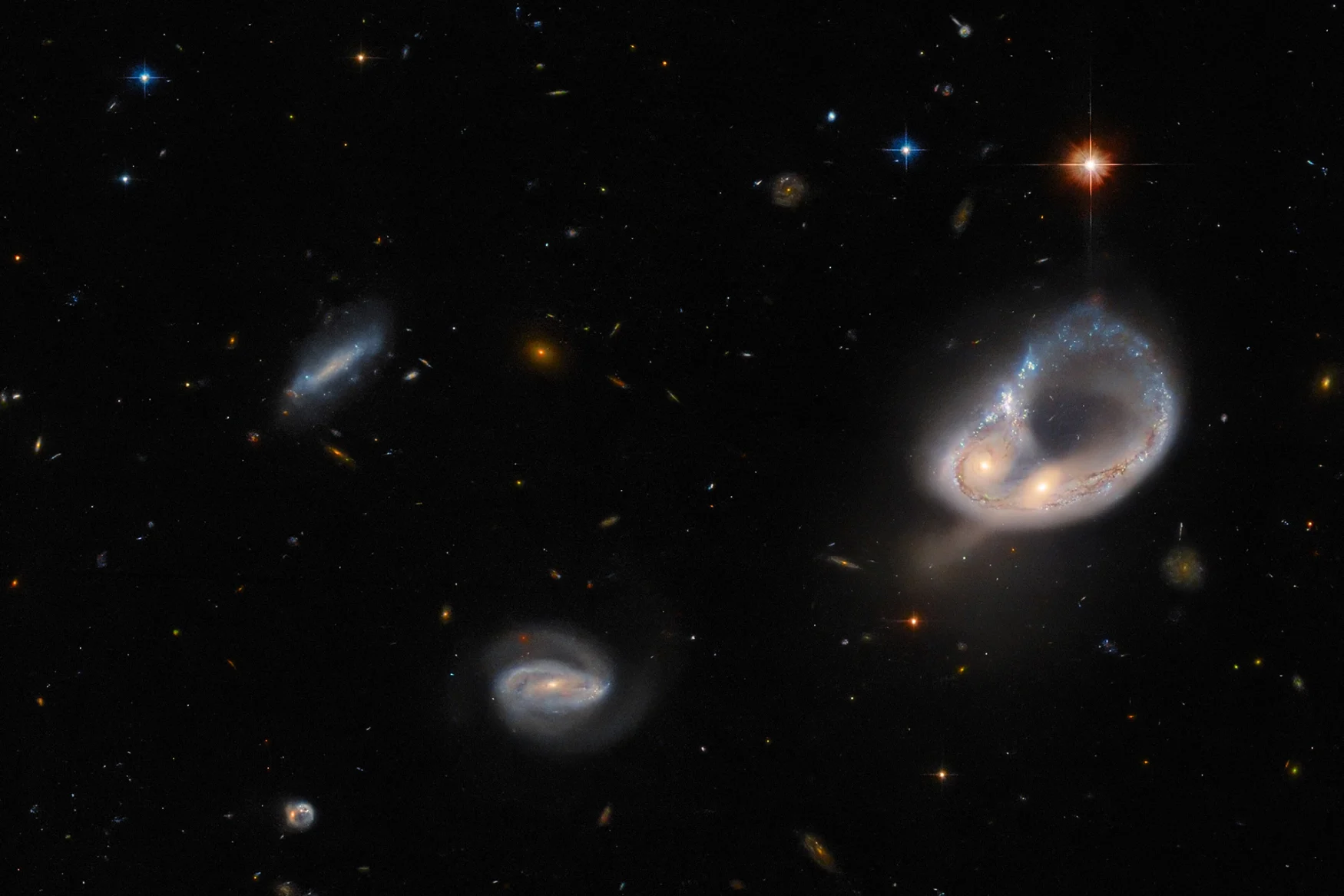Hubble is still providing dramatic pictures of the universe despite the arrival of the James Webb Space Telescope. NASA and the ESA have released a Hubble image of Arp-Madore 417-391, a strange galaxy collision about 670 million light-years away. Their gravitational tug-of-war has produced an odd ring-like shape where the two galactic cores are relatively close and the star “plumes” form a circle.
The telescope spotted the merger using its long-serving Advanced Camera for Surveys, which has helped detect strange galaxies and even dark matter. Researchers are using the orbital hardware to build a list of follow-up observations for the much newer James Webb telescope, which has sometimes been used in tandem with Hubble to study space objects.

The Arp-Madore 417-391 galaxy collision in its greater context.
ESA/Hubble & NASA, Dark Energy Survey/DOE/FNAL/DECam/CTIO/NOIRLab/NSF/AURA, J. Dalcanton
You may not see Hubble leading these discoveries for much longer. The telescope has suffered a number of system failures in recent years, and is expected to plummet to Earth as soon as 2030 if there are no interventions. While NASA and SpaceX are considering boosting Hubble’s orbit to keep it active, that extended lifespan isn’t guaranteed. This galaxy crash may represent one of the telescope’s last hurrahs, even if the observatory has years left in space.
All products recommended by Engadget are selected by our editorial team, independent of our parent company. Some of our stories include affiliate links. If you buy something through one of these links, we may earn an affiliate commission. All prices are correct at the time of publishing.